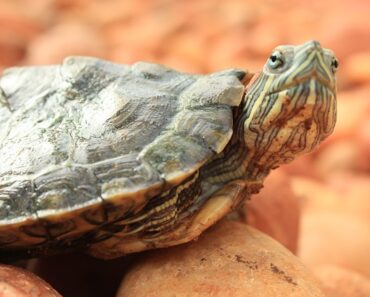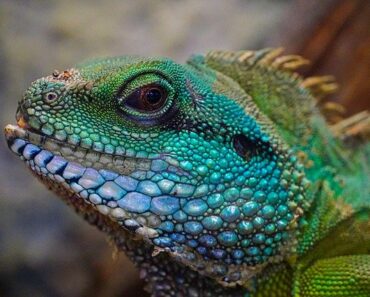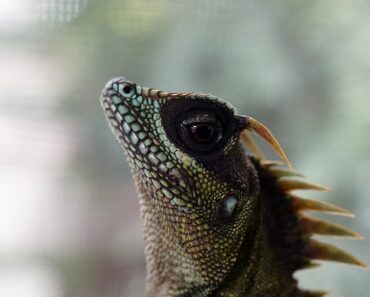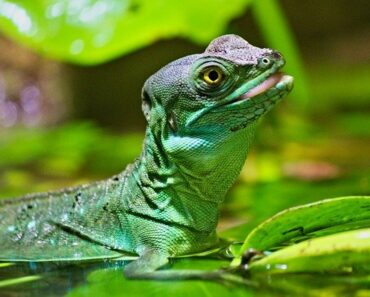Geckos are small lizards that originally originated in Asia, but have spread across the entire surface of the Earth: they are now found in almost every country and in all climates, except in the polar regions and north of the temperate regions. They are relatively easy to maintain in captivity and can be entrusted to beginners in terraristics.
Morphology and behavior
There are geckos of all sizes and colors. The most frequently encountered in captivity are the leopard gecko and the crested gecko. These adult varieties measure 20 to 30 centimeters long and weigh from 60 to over 100 grams.
The leopard gecko

The leopard gecko comes from the Middle East. It owes its name to the spots, of different color and size depending on the individuals, which are an asset for camouflage in the natural environment. Unlike other geckos, the leopard gecko can move its eyelids and close its eyes when it sleeps. It is a nocturnal (active at night) and terrestrial animal: it lives on the ground and its fingers end in small claws.
The crested gecko
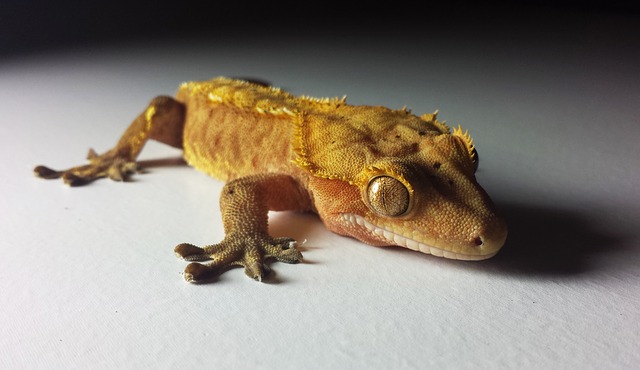
The crested gecko comes from New Caledonia. It owes its name to the ridges that start at the top of its eyes and extend to its tail. Like most geckos, it does not have a mobile eyelid: its eyes are protected by a transparent scale (as in snakes). It is a nocturnal and arboreal animal: it has small adhesive organs consisting of hair grouped in strips under the fingers, thanks to which it can adhere to any surface, even smooth surfaces such as the glass walls of its terrarium.
Geckos are docile and relatively easy to handle and tame. In captivity, they can live up to 15-20 years.
Some geckos emit small cries to communicate with each other.
Food
The gecko is insectivorous. It eats in captivity live insects (crickets, mealworms, silkworms, beehive moths, small cockroaches, crickets, cockroaches …), and occasionally a mouse or a gerbil a few days old. In order to avoid any risk of suffocation, the size of the prey should not be more than half the width of the gecko’s head. For a rich and balanced ration, the prey must be fed and sprinkled with calcium and vitamins before being eaten by the lizard. Adults are fed every 2 days and the young every day.
Offer your gecko only what he can consume during a meal. All uneaten prey must be removed from the terrarium.
Don’t forget to leave fresh, clean water in a shallow dish at all times.
Geckos store extra fat in their tails. Geckos store extra fat in their tails. They draw on these reserves in times of shortage. A fat tail is therefore a sign of good health.
Reproduction
It is best to wait until the geckos are at least 8 months old (minimum weight 45 g) for males and at least 1 year old (minimum weight 50 g) for females. You will set up a box (nesting box) with a floor covered with a thick layer of substrate mixed with sand for the female to dig in and lay her eggs (1 or 2 in general), about 4-5 weeks after mating. Then, the eggs will have to be retrieved and placed in an incubator. The eggs hatch in about 2 months.
The sex of the baby gecko depends on the incubation temperature: at an incubation temperature of 27-28° the eggs generally give females, at 31-32° the eggs generally give males, at 29-30° the eggs give half males and half females.
Housing
The geckos are housed in a terrarium. For one or two geckos, its dimensions should be 45 cm (length) x 45 cm (width) x 45 cm (height), i.e. a volume of about 90 l. To house more than 2 geckos, you must provide at least 110 l.
If you wish to have several geckos, never put two males together in the same terrarium, whatever its size. A group of geckos will consist of one male and 2 or 3 females.
The terrarium must have a source of heat and light :
A simple low-power bulb placed on the top of the terrarium and lit 12 hours a day is sufficient for light. Geckos are nocturnal animals, they do not need UV rays as long as their food is enriched with calcium and vitamin D3.
A heating mat or heating lamp can be used to heat a part of the terrarium, thus creating a temperature gradient so that the lizard can regulate its own body temperature. Ideally, the “hot” point should be around 30°C and the “cold” point around 25°C. The heating can be turned off at night if the room is kept at 22°C.
Check the temperature of the hot zone regularly to avoid burns.
The humidity level in the terrarium should not be very high: 50% humidity is sufficient for adult geckos. Simply spray a light mist into the terrarium in the evening and let it dry all day before starting again. For baby geckos, which tend to dehydrate easily, the level should be higher.
Place a rot-proof substrate, specially designed for reptiles and sold in pet stores, in the bottom of the terrarium. A synthetic mat, newspapers or wood shavings are also suitable. It is best to avoid sand. Don’t forget hiding places, which are essential for nocturnal animals, a decor of rocks or fake plants, a box with sphagnum moss or damp vermiculite to help the gecko get rid of its old skin when moulting and, of course, branches for tree species.
Secure the top of your vivarium: provide a cover, small openings for ventilation and a protective grid on the bulbs to prevent burns.
A gecko’s terrarium requires little maintenance: simply change the water every day and clean “roughly” once a week, mainly to remove excrement. Without any particular problem, a disinfection of the terrarium every 2 or 3 months is sufficient.
Health and care
Geckos are robust animals that adapt well to life in captivity. Maintained in good conditions and fed with an adapted diet (do not forget the calcium and vitamin supplement), geckos are rarely sick.
The main diseases encountered are: nutritional osteodystrophy (due to calcium and vitamin D deficiency), gastroenteritis (due to the presence of parasites), intestinal occlusions (often due to the absorption of an unsuitable substrate), egg retention in females and loss of fingers (an incomplete moult leads to the persistence of flaps of skin that form a tourniquet around the fingers).
To differentiate between males and females…
You can quite easily differentiate between males and females, as soon as they measure 12 cm, by turning the animals on their back and observing the base of the tail :
Male geckos have two hemipenian swellings (swelling of the skin that encloses the hemipenis, between the cloaca and the tail) and pre-anal “V” shaped pores between the hind legs;
Female geckos will not have the hemipenian swellings (beware in slightly chubby females, fat deposits may resemble the hemipenian swellings).
To handle a gecko
Never hold a gecko by the tail: it can become detached from the body (this is a way for geckos in their natural environment to escape predators). Don’t panic though, the tail can grow back, except in the crested gecko. It is best to take the gecko around the abdomen.



